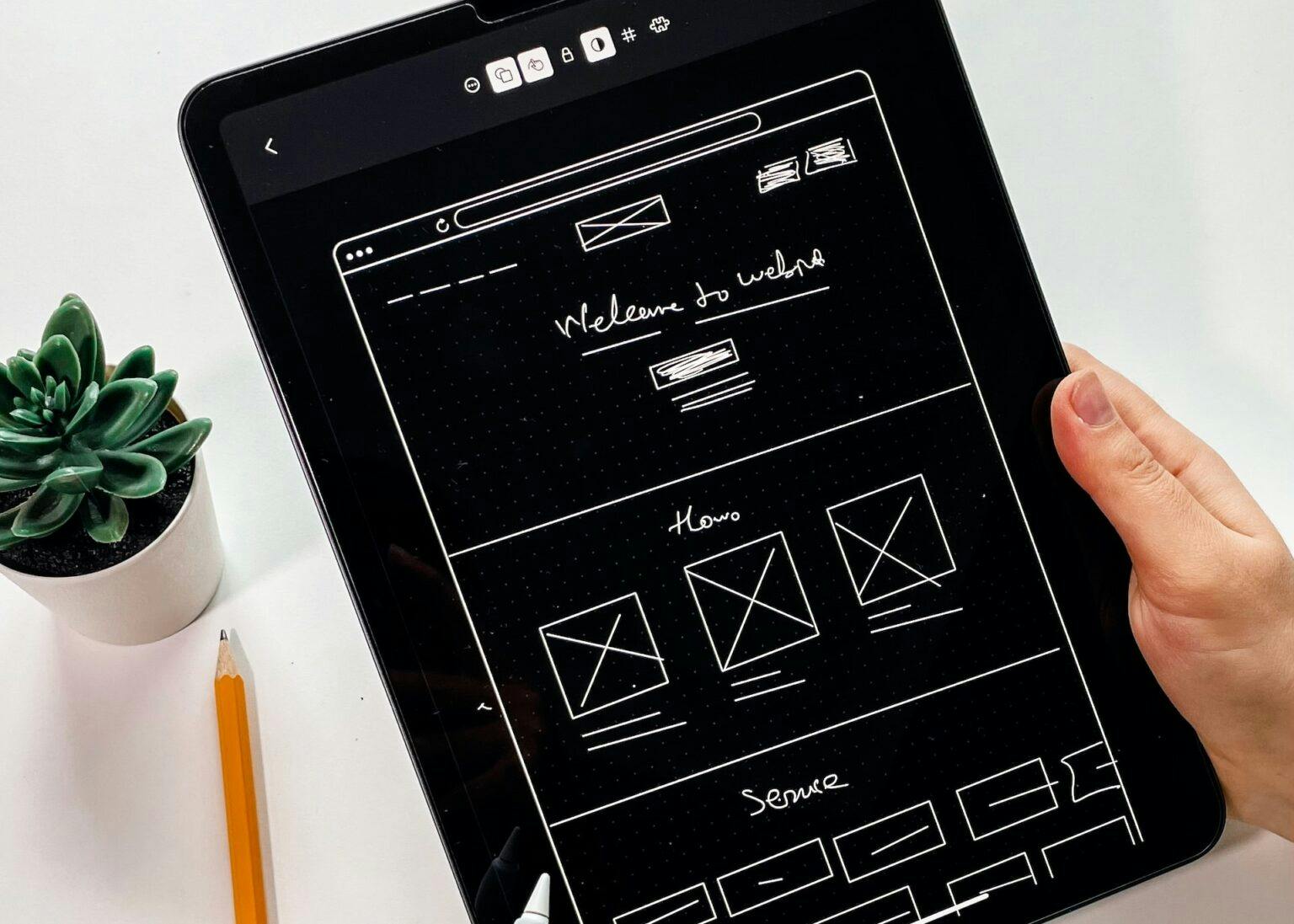Interpreting How Heat Maps Work For Your Website
Published May 3, 2021 by Bryan Miller
These days, website performance is more important than ever. Because of the large number of customers who use the internet, it’s essential that your website has a great design, is functional, and loads quickly. If you focus on these elements of web design, you should be able to bring in a high number of customers. Increased visitor traffic will result in a better performance for your website.
Businesses are increasingly using complex tools like heat maps to effectively improve visitor traffic, strengthen sales and conversion rates, and encourage brand engagement, which is why you should consider this option when attempting to bolster the performance of your website.
Heat maps can help you analyze your web strategy by giving you a visual representation of how site visitors interact with your website. If certain pages are getting less traffic than others, the heat maps you look at should help you understand why your current strategy is lacking and how you can improve. The precise data that can be gathered with heat maps can provide your company with tangible benefits as you use the data to alter your strategy. This article offers a comprehensive guide on how to effectively interpret the data that you receive from heat maps.
What is a Website Heat Map?

Heat maps are designed to show you exactly how users are interacting with your website as well as the ways in which they don’t interact. Data values are displayed in different colors with warmer colors representing areas of the website that have received numerous clicks and interactions. While the static data provided by tools like Google Analytics can be helpful when assessing site performance, it’s highly recommended that you pair this static data with the kind that’s provided by a heat map. With a heat map, you should be able to identify the exact aspects of your website layout that require additional attention.
The types of interactions that are measured by a heat map include scrolling, clicking, geographic location, attention, and movement. When you obtain these data sets, you can use the information to improve almost every facet of the web layout and design. Once you improve your website with this information, you should notice better interactions on future heat maps. Higher interactions equate to a more satisfied and engaged audience, which means that your conversion rates will likely increase as well.
The Purpose Behind Using a Heat Map
The main reason that you should use a heat map to assess site performance is that it displays performance in a way that other performance tools don’t. Heat maps give you a better understanding of what site visitors interacted with on your website, which you can use to provide visitors with more of what they want.
The data you obtain can be used to identify trends with site engagement. If interactions have consistently spiked on certain areas of your website, you should gain more insights into why visitors are coming to your website and what keeps them engaged long enough to make a purchase or become a member. All of the insights you receive from a heat map are actionable and will help you make better and more informed business decisions.
Another reason why you should use heat maps is that it’s otherwise very difficult to find out what customers want from a site design and layout. Even if some customers know exactly what they want from the websites they visit, very few customers are able to express it. The precise nature of heat maps makes them very reliable when compared to most other tools. While some of the data that’s gained from tools like Google Analytics can be interpreted in a variety of ways, the data you receive from a heat map is simple.
Who Benefits from Heat Maps?

Heat maps make it easy to identify how users interact with a website, which is why the data gained from a heat map can be beneficial to numerous marketing professionals. The four primary professionals who can benefit from heat maps include:
- UX designers
- Digital analysts
- Product Owners
- Marketing professionals
Keep in mind that all of these roles focus on identifying why users aren’t converting. Conversion rates are essential because they indicate how many visitors are taking an action on the website, which could be anything from subscribing to a newsletter to purchasing a product that’s available on the website. Low conversion rates indicate that a website is poorly designed. Even if your rates are low, however, there are many techniques you can use to improve your conversion rates.
When it comes to UX designers, these professionals commonly use heat maps during usability testing. They can also use the data to identify design changes that need to be made and to hone in on unexpected behaviors that users are displaying when they reach the website. As for marketing professionals, they can use heat maps to measure how effective ad placements are by looking at how far users scroll down a certain page and how long they stay in a specific area of the site. Marketers can also use the data from heat maps to figure out where to place calls-to-action to improve click-through-rate, which refers to how often users click on ads.
Digital analysts use heat maps to support the business decisions and recommendations that they make. They can also use the data they receive to perform additional analysis or to disregard data that they believe is irrelevant to their goals. As for product owners, heat maps are commonly used to investigate assumptions. If a recent UX change was made to improve engagement, a heat map could eliminate this assumption by showing that the performance is worse after the change.
Five Different Types of Heat Maps
Before you start using heat maps to improve site performance, there are five different types of heat maps that you should be aware of, which include:
- Attention heat maps
- Scroll heat maps
- Geographical heat maps
- Movement heat maps
- Click heat maps
1. Attention Heat Map
This heat map allows you to identify how effective your website design is. When you look at an attention heat map, you’ll see how long users spend looking at the content on your website. If you perform an ample amount of content marketing for your website, this type of heat map can be very useful. In the event that hardly any users reach the end of the articles you write, it’s possible that you would need to shorten your content for enhanced readability. Along with identifying which content is most and least popular, and attention heat map allows you to determine the best locations for calls-to-action.
2. Scroll Heat Map

A scroll heat map works similarly to an attention heat map, which is why it’s beneficial for analyzing the performance of content-heavy pages. The main goal of this heat map is to show you how far users scroll down the page before going to another page or leaving your website altogether. If you’re placing important content too low on a page, this type of heat map will tell you this. You’ll also be provided with the average fold line on each page.
Any of the content that’s positioned above the fold line will be viewed by 100 percent of your site visitors. This percentage will start dropping the further you go below the fold line. The data you get from scroll heat maps can be used to measure the engagement that users have with your content. If you’re a UX designer, you can use this information to add interesting design elements below the fold. For marketers, it’s possible that interactive content or buttons can be placed in areas where engagement is low.
3. Geographical Heat Map
A geographical heat map allows you to identify the areas, cities, and regions where your website is most popular, which gives you a unique opportunity to target your marketing and remarketing efforts. Geographical heat maps are ideal for giving you data-driven arguments that you can use with your team, tracking data from users who have shown interest in your products or establishing a business in a market or city where your brand is popular. When you gain information from a specific city, you can use this data to perform effective marketing campaigns on Twitter, Facebook, and Instagram.
4. Movement Heat Map

A movement heat map allows you to perform mouse tracking to determine the best areas on your site for conversions and usability. Most users will place their mouse in areas that have their interest. If the call-to-action on your website is being clicked on, the movement heat map will appear red in these areas. Movement heat maps are great for identifying if people watch a video or fill out a form, determining the best-performing areas of your site, and finding problems that could stop conversions.
5. Click Heat Map
A click heat map can show you exactly how the clickable elements on your website perform, which include any links or calls-to-action that you’ve placed throughout your website. You can also see non-clickable areas on your website that is receiving a large number of clicks. If users are attempting to convert by clicking on a page but are unable to reach the desired destination, they could leave your website altogether. This type of heat map gives you insight into your conversion rates and how they can improve. The benefits of using a click heat map include:
- Identify coding issues on your website that cause a clickable element to be non-clickable
- Tracking usability of website features
- Improving conversion rates by finding out why users aren’t converting
While marketers mainly use click heat maps to perform conversion rate optimization, UX designers track how clickable elements are performing. Heat maps can be highly beneficial for any business and website. While search engine optimization is great for bringing new visitors to your website, the only way to keep visitors engaged once they enter is by providing them with a website that’s functional and performs well. Heat maps should help you improve the performance of your website, which will likely result in better conversion rates and more traffic.
Bryan Miller
Bryt Designs
Bryan Miller is an entrepreneur and web tech enthusiast specializing in web design, development and digital marketing. Bryan is a recent graduate of the MBA program at the University of California, Irvine and continues to pursue tools and technologies to find success for clients across a varieties of industries.
Subscribe to our newsletter
STAY UP TO DATE WEB DESIGN, DEV, & SEARCH MARKETING INSIGHTS & TIPS
Suggested Content
The Impact of Visual Metaphors in UX Design
Published 2023-04-24T06:00:16 by Grant Walton
Design Your Website Like a Pro: How to Create Effective Wireframes
Published 2023-03-06T06:00:00 by Grant Walton
Website Heat Maps and Utilizing them Effectively for Growth
Published 2022-01-18T13:38:37 by Bryan Miller



